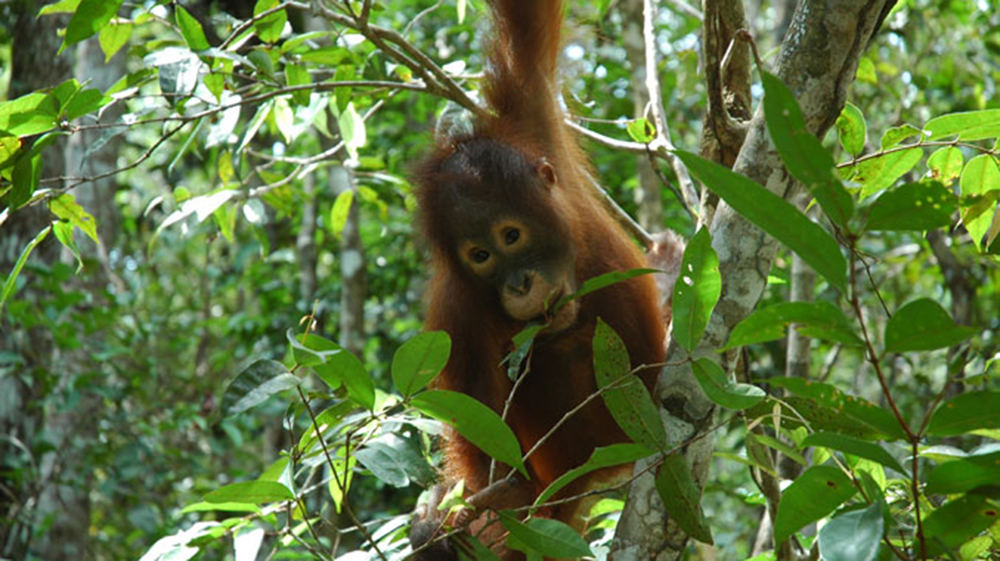
Kumai is a collection of muddy wooden houses lining a dusty street on the west bank of the wide brown Kumai River (Kalimantan, SW Borneo). We spent 10 days there at the beginning of March, it was great. We were well looked after by Herry with his Yacht Services hat on, who provided us with all we needed in terms of fuel and water for the boat and by Herry with his EcoTour guide hat on, who also provided us with a scaled down version of Africa Queen for our adventure in the Tanjung Puting National Park.
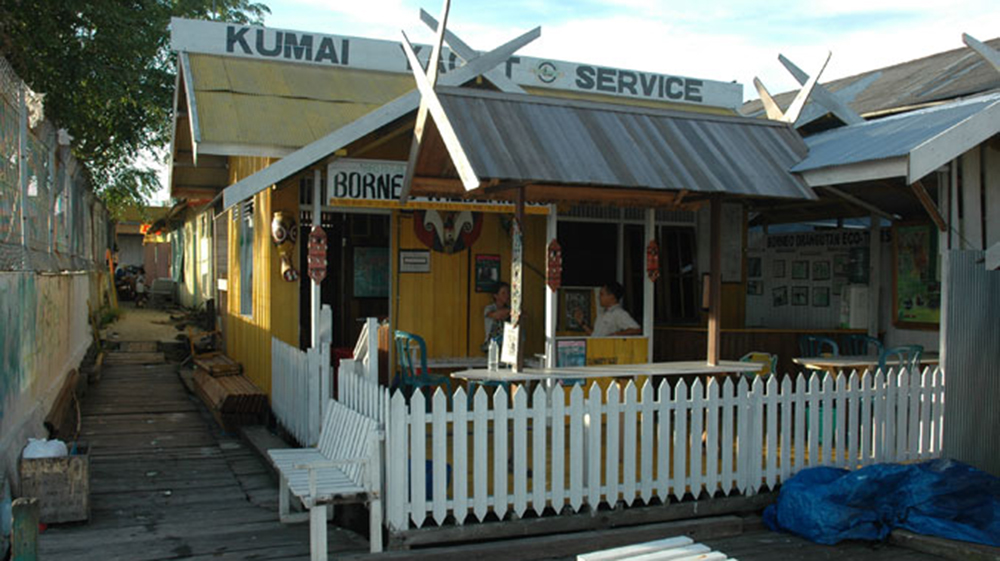
The park is bounded by the Sekonya River (a tributary of the Kumai River) and it was here the old one cylinder Chinese engine in our vessel putted it’s last putt, on the first day of our tour! We didn’t mind at all, we were happily relaxed on the roof – cushions, coffee, binoculars at the ready, spotting proboscis monkeys . . . watching us watching them . . . that’s always a funny moment! We drifted gently back down stream to the first ranger camp, Rudi, our tour guide and entertainer, organised a second more luxurious craft (the toilet on the back deck had a roof) and we set off again for Camp Leakey.
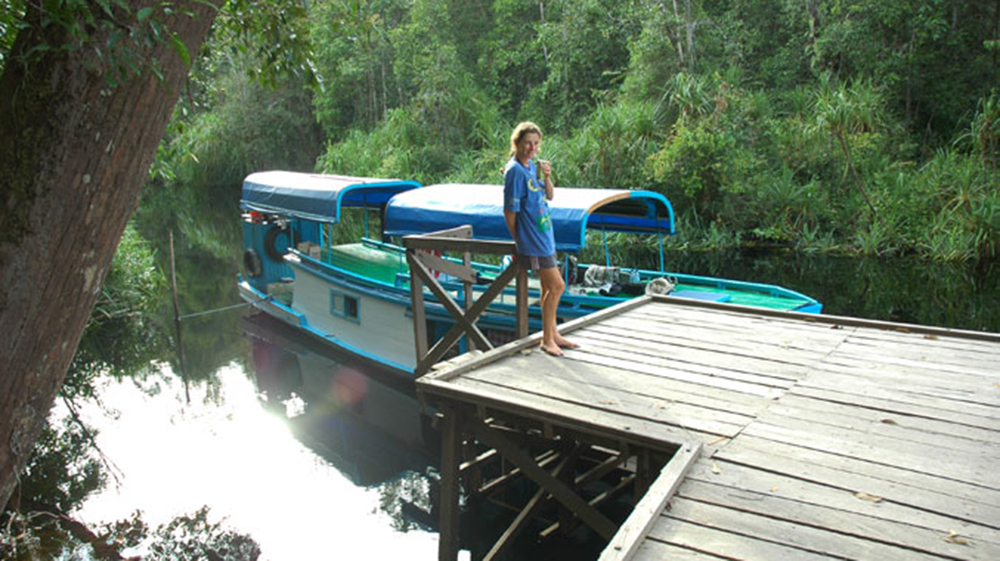
An orang utan rehabilitation centre was set up at Camp Leakey in the 1970’s and it serves as a research base, a camp for rangers and scientists. The Tanjung Putting National Park is >400,000 hectares but is being encroached upon by loggers and oil palm plantations. Because the natural habitat for the wild and semi-wild orangutans can no longer provide enough food to sustain them, the park rangers put out fruit at the feeding stations every day.

We went to one feeding station where a mother and baby were first to approach the platform. She sat there carefully peeling bananas for herself and feeding them to the baby. When a young male arrived she shoved as much fruit as she could into her mouth, grabbed baby and shimmied up a vine with four bananas sticking out of her mouth like brown teeth. Watching them swing from branch to b ranch up in the canopy is like a ballet, a combination of strength and balance.

The young male had settled in for a feed when and alpha male “the King” arrived. As he came down the young male stuffed his mouth full of chunks of breadfruit, grabbed another handful for good measure and left up the same vine. The King is 80 kilo, covered in long orange hair with wide cheek flaps which give his face a moon like shape. His arms are twice as long as his legs and the strength in his shoulders and torso is 10x that of a man. No-one was going to argue with him and he sat down and polished off all the fruit.
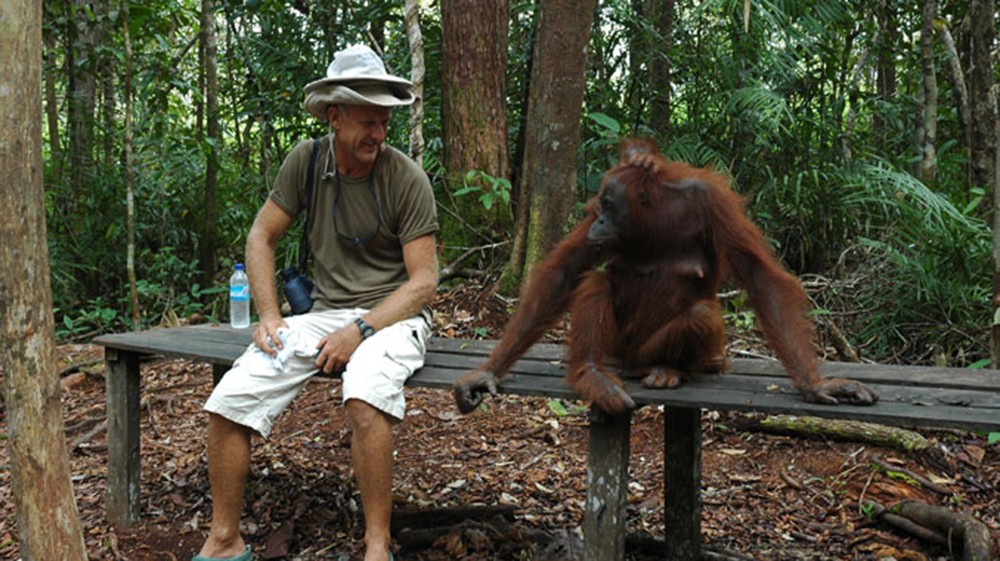
The dominance of the alpha male was demonstrated to us at another feeding station. After scoffing all the fruit and contemplating a wild boar that was foraging under the platform, the King off along the forest path to where a mother and youngster were watching from a tree, waiting for a chance to feed.
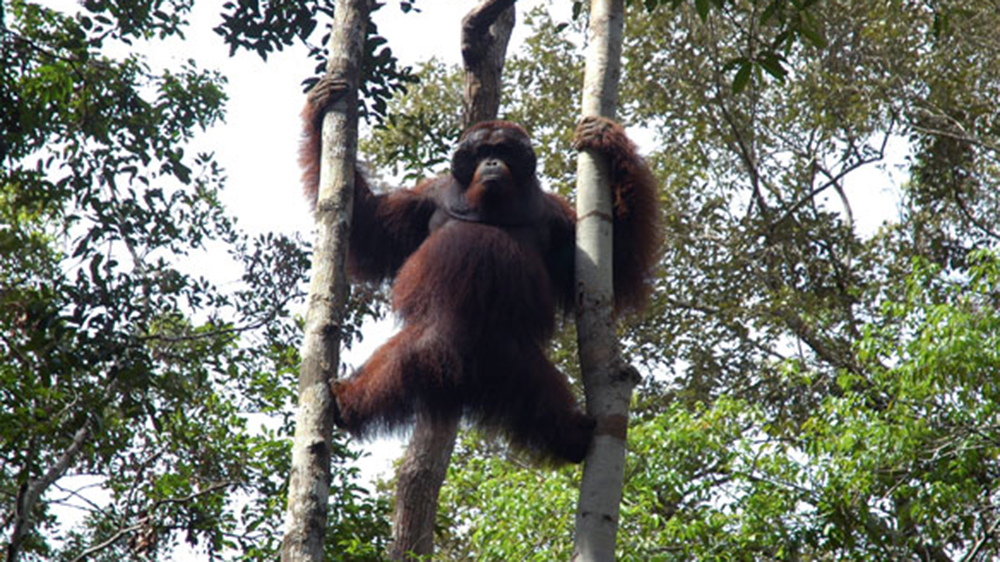
The King grabbed the mother and pulled here down to the ground and mated her in the undergrowth, accompanied by a necessary amount of grunting and roaring. The youngster was desperately screeching and leaping from branch to branch, backwards and forwards. Once it was over the mother emerged, retrieved the baby and wondered off as if nothing had happened, she didn’t get any fruit that day.

Of all the monkeys and apes we saw the true clowns and acrobats were the gibbons. Two young males, a mother and a baby were regular visitors to Camp Leakey. They flipped and swung and somersaulted like Jungle Book animations, hanging from one arm, two arms, sometimes one arm and a leg. Their comical leathery faces, haloed by soft white fur, are cautious as they gently take a rambutan from your hand with their elongated, velvety fingers.
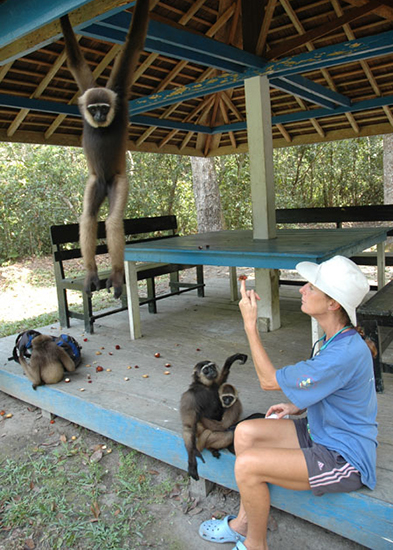
All in all a wonderful experience for us humans!
